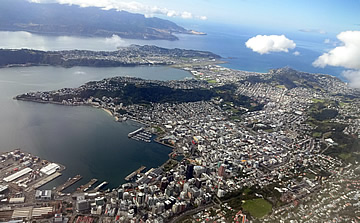


A modern, busy city on the southern tip of the North Island; while we were there we visited two extremely impressive exhibitions on New Zealand in the First World War.

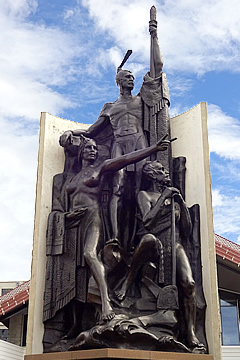
The very first place we visited on arrival in Wellington was for lunch!
Having dropped our car at Hertz we wandered into the city and came to Cuba Street - full of places to eat. We decided to have lunch at Ombra where the emphasis is on sharing food. It looks very much like a converted garage where the money has run out, but has a nice buzzy atmosphere and the staff are great. Excellent Garage Project beers, margherita pizzette - very good San Marzano tomato sauce - and good prosciutto with very hard grissini.
We then wandered in the direction of Te Papa, the famous museum. Most of the action in the city seems to be around the harbour and the harbour area was the main attraction for the first settlers too.
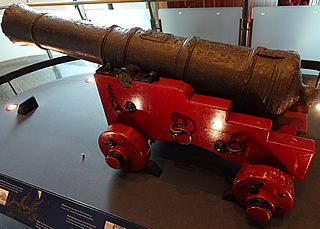

The Maori name for Wellington is Te Whanganui-a-Tara - great harbour of Tara, named after the son of a chief, Whatonga, who had settled on the Hawke's Bay coast. Tara and his half-brother were sent to explore the south of the North Island by their father and they were so taken with what they saw that Whatonga's followers moved there, founding the Ngati Tara tribe.

The English sea captain James Cook made three voyages of discovery to New Zealand between 1769 and 1777, but European settlers did not arrive until 1840, intent on buying land from the Maori. Whatever transactions took place, there have been many disputes about land ownership since then.

The original waterfront was on Lambton Quay but land reclamation has pushed this back from the coast - it is now a very busy shopping street and the waterfront is now along Waterloo, Customhouse and Jervois Quays.


At the southern end of Lambton Quay is Plimmer steps, named after John Plimmer, sometimes called the "Father of Wellington". He had great influence in the development of the city, almost from the time of his arrival in 1841 from England. He was an entrepreneur and businessman, politician, and founding member of the Wellington and Manawatu Railway Company.2 He lived at the head of Plimmer steps and could often be seen in the vicinity with his dog Fritz. and there is now a lovely bronze there, immortalising the pair.
Right at the southern end of Lambton Harbour on Oriental Bay is the fine Art Deco Central Fire Station. It is in excellent condition




We'd driven down from Tongariro, a four hour drive but no problem at all - there were more dead possums on the road than cars!
We were staying at the Bolton Hotel near the Beehive, one of the modern parliament buildings and something of a landmark, but not, in my opinion, a very attractive building. Nearby is the Wellington Cenotaph, a WW1 and WW2 memorial with some fine relief panels. Surprisingly, our visit to Wellington turned out to have a very strong First World War theme!

Our lovely huge suite was ready for us - the views of the hillside dotted with fine houses were very nice, and we had lots of comfortable space to chill. Right next to the hotel is reputedly the oldest house in Wellington. The Sexton's Cottage was built in 1857 by Charles Mills for the Church of England sexton or verger. It's a timber-framed building with shiplap weatherboarding, ideal in a wet climate, and was extended in 1887.



We took the cable car up from Lambton Key late one day after we'd been in the city all day. It was then a very leisurely walk down through the gardens to our hotel.
At the top of the cable car there is an excellent view over the Wellington business district and across the harbour to Hutt Valley, Eastbourne and Mount Victoria.







In the south of the city is Wellington's cricket ground, Basin Reserve, on what was once a swampy piece of ground created by an earthquake in 1855.3 The first game was played here in 1868, it having taken five years to drain and flatten the ground, and create the cricket ground. The first Test Match wasn't until 1930, played against England and ending in a draw.
One infamous aspect of Wellington we didn't experience - the wind! It is nicknamed "Windy Wellington" for the strong winds that blow through the Cook Strait but there wasn't even a breeze while we were there.

The absolute "must see" in Wellington, Te Papa is the "Museum of New Zealand". I was keen to see the Maori section, and Andrew the Gallipoli exhibition. On our first visit the queues for Gallipoli were huge so we went to the Maori halls and left Gallipoli for a quieter time - one of the guides told us late afternoon was a good time to come.
Photography in the Maori section was restricted.


Even a brief exposure to Maori culture will serve to emphasise their love of - and skill at - carving wood. Carvings are always very emphatic, often featuring fierce and mystical beasts. They could tell stories, revere ancestors, or simply decorate. Almost anything that could be carved would be carved including door posts, lintels and wall panels, masks, canoes, and weapons.
Genealogy is extremely important to the Maori people. They use notched carved wooden genealogy sticks - rakau whakapapa - to help recount the names of important ancestors. Genealogy is particularly important in establishing claims to status and land.
There is a nice interactive musical instrument display so that you can hear the flute, conch etc.
The star exhibit is a magnificent carved meeting house but I most enjoyed the short video telling how the haka was born. A tribal chief, Te Rauparaha escaped enemies by finding sanctuary with another tribal chief with common ancestry. Among the men chasing him were tohunga, who had the power to see beyond the physical. Te Rauparaha hid in a food storage pit guarded by the chief's wife - both food and the power of women negate the supernatural powers of the tohunga. When the danger was past he emerged, defiant, chanting the "Ka mate" "I may die" haka.

The Gallipoli - The Scale of our War exhibition was fantastic. On 25th April 1915, British, Australian and New Zealand troops landed on various beaches on the Gallipoli peninsula in an attempt to strike towards Constantinople and force Turkey out of the war. In the face of determined Turkish resistance little ground was gained in a bloody campaign which lasted eight months before the Allies were forced to admit defeat and withdraw from the peninsula.

25th of April is now marked as ANZAC day each year.
Larger than life, extremely realistic figures anchor the story of the campaign as it is told through the exhibition.4

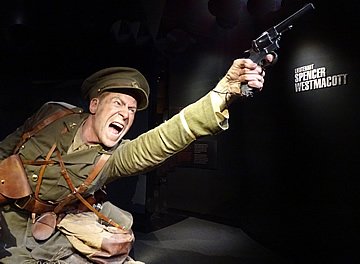
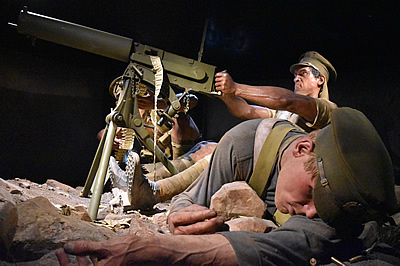
 Private John (Jack) Dunn
Private John (Jack) Dunn

Machine guns provided vital support to infantry. In the battle of Chunuk Bair four regiments of mounted rifles opened the assault, supported by 200 men from the Maori Contingent and the New Zealand Engineers, opening the way for the infantry to come through.
During the night attack the Maori warriors' haka rent the air "Ka mate! Ka mate! Ka ora! Ka ora!" " I may die! I may die! I may live! I may live!"

The Pukeahu National War Memorial, officially opened 18 April, 2015, stands high on a hill looking out over the city to the sea. Though the art deco tower has stood here since 1932 as a First World War Memorial, the park was developed for the WW1 centenary to extend the commemorations to other theatres of war. The hill on which the memorial stands was a special place for the local Maori peoples and Pukeahu means "sacred hill".
We came here to visit a special exhibition: The Great War Exhibition created by Sir Peter Jackson (known to most as the director of the Lord of the Rings films). The exhibition commemorated the role of New Zealanders in the First World War.

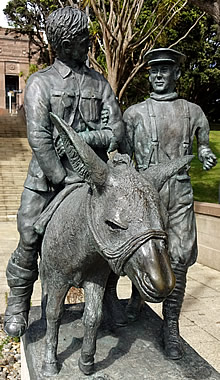

Before entering we took a look around the striking Australian Memorial, a set of upright red sandstone columns inset with black granite featuring artwork of indigenous peoples of New Zealand and Australian and inscriptions commemorating battles in which the two countries fought alongside each other.

Peter Jackson's Great War Exhibition is exemplary. With wonderful montages of battlefield scenes, moving photographs and concise explanations, it succeeds in telling the story of New Zealand's war in an accessible but comprehensive way.5 The colouring of the original black and white photographs really seems to make them even more poignant.
Starting with recruitment and working through various wartime scenarios, even children would not be bored in here. We found it to be extremely well done.
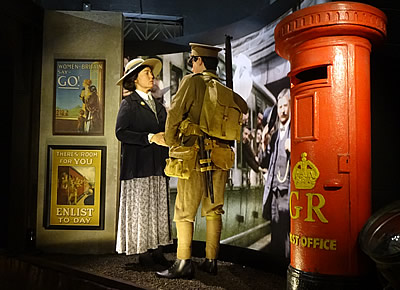


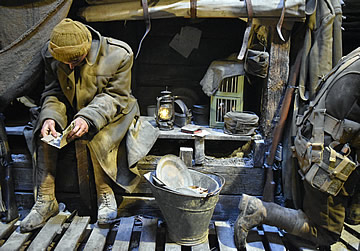







Finding a wandering donkey Private John Simpson Kirkpatrick used it to carry casualties from the front line back to safety, braving enemy fire and earning tremendous respect among the Anzacs. Others, inspired by "Simpson", did the same, but artist Horace Moore-Jones believed it was Simpson he painted in his series of watercolours. Simpson and Murphy thus inspired the sculpture in front of the museum.





We had a great lunch at the Bresolin on the way back into the city. Two large cold Garage Project beers really hit the spot as it had become a very hot day. Excellent fish and chips and fish cakes with nam jim sauce and a chilled glass of sauvignon blanc. Chocolate slab and chocolate and mint ice cream sundae to finish - perfect!

We took a cab to the airport early in the morning. It's a really lovely drive around the bay and there was no traffic to speak of.


As in Auckland airport, there were various Lord of the Rings references, including magnificent models of giant flying eagles - the eagles came to the aid of the Fellowship more than once.


A gorgeous day for flying too!
